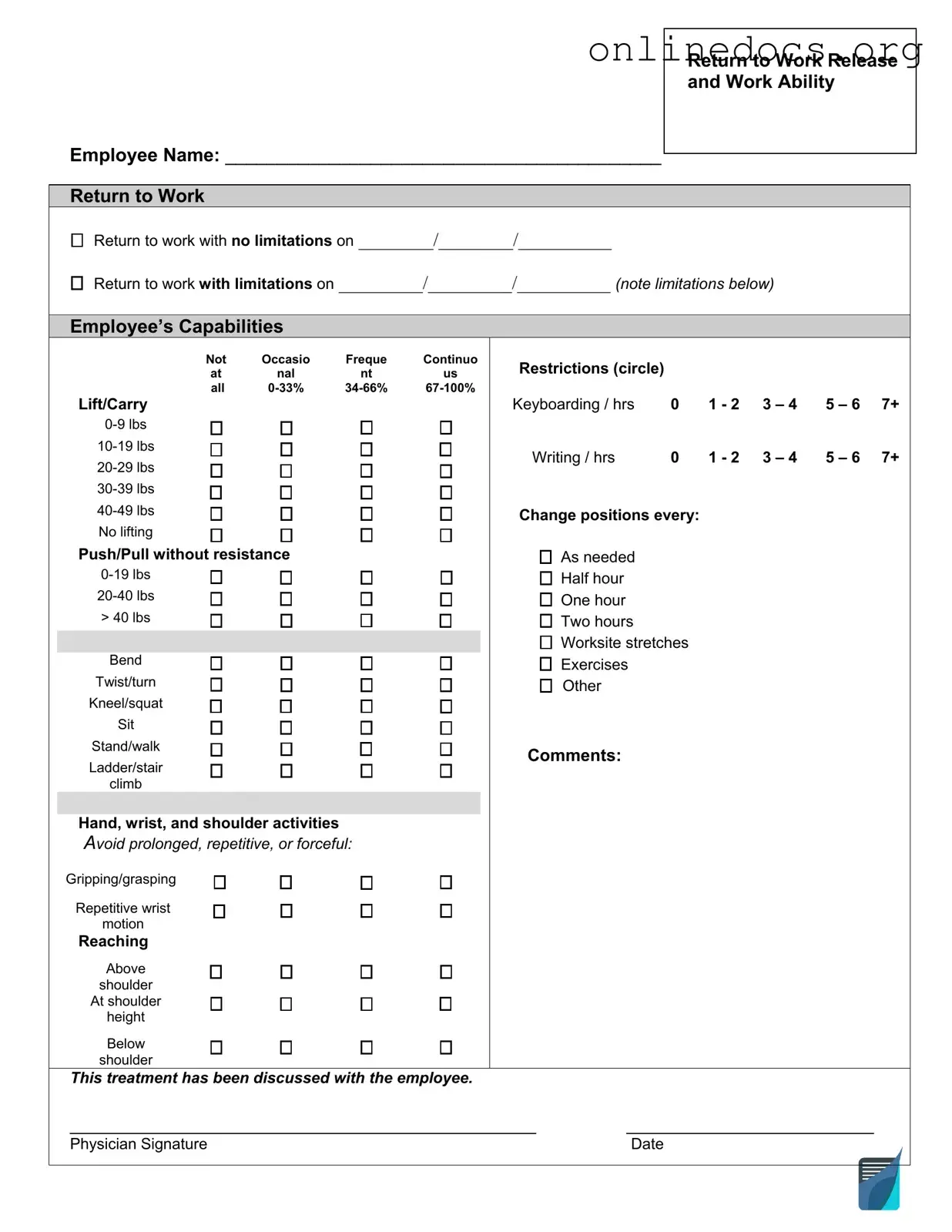The Work Release form shares similarities with the Employment Verification form. Both documents serve to confirm an individual's employment status and details. The Employment Verification form typically requires the employer to provide information about the employee’s job title, salary, and duration of employment. Like the Work Release form, it is often used to facilitate certain legal processes, such as loan applications or housing approvals, where proof of income and employment stability is crucial.
When engaging in the trailer ownership transfer process, it is essential to ensure all necessary documentation is completed accurately. The California Trailer Bill of Sale form serves this purpose by providing a clear framework for the transaction, ensuring that both the buyer and seller are protected under the law. For more information on how to fill out this form, you can visit californiapdfforms.com/trailer-bill-of-sale-form/, which offers comprehensive guidance throughout the process.
Another document comparable to the Work Release form is the Medical Release form. This form allows individuals to authorize the release of their medical information to designated parties. Both forms require consent from the individual, ensuring that personal information is shared only with authorized entities. The Medical Release form is essential in situations where medical history may impact employment or legal matters, similar to how the Work Release form impacts an individual's ability to work while under specific legal constraints.
The Permission Slip is also akin to the Work Release form. Often used in educational settings, a Permission Slip allows parents or guardians to give consent for their children to participate in activities. Both documents require signatures and serve as a means of granting permission. While the Work Release form pertains to employment and legal obligations, the Permission Slip focuses on parental consent, highlighting the importance of authorization in various contexts.
The Release of Liability form bears resemblance to the Work Release form in that both involve the acknowledgment of risk and the acceptance of certain conditions. The Release of Liability form protects organizations from legal claims by participants in activities, while the Work Release form enables individuals to work under specific legal circumstances. Each document ensures that the signatory understands the implications of their agreement, whether it pertains to employment or participation in activities that may involve risk.
Finally, the Non-Disclosure Agreement (NDA) shares characteristics with the Work Release form, particularly in terms of confidentiality and consent. An NDA protects sensitive information shared between parties, requiring them to keep that information confidential. Similarly, the Work Release form may involve the sharing of personal or sensitive information related to an individual’s legal situation. Both documents emphasize the importance of privacy and the need for clear agreements regarding what can and cannot be disclosed.
